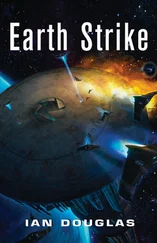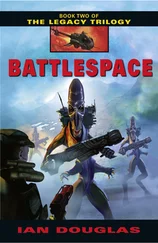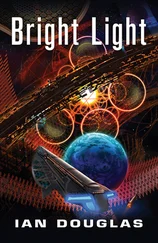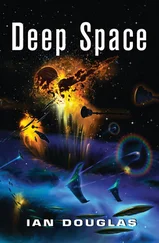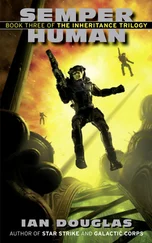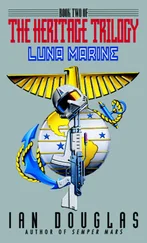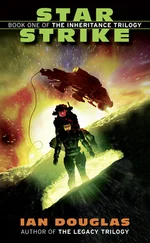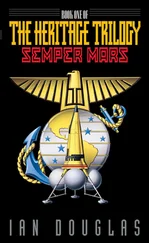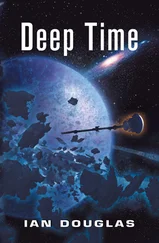Worse than that, though: What if the pain didn’t go away?
The fact that Paula might be waiting for me on the Other Side did occur to me, of course, and for a while, there, it made the nanobot option damned attractive, let me tell you. I got as far as actually working out the program algorithms for my N-prog and assembling the hardware I would need.
But I didn’t do it. I couldn’t. I was afraid of the pain that went on and on, but I was afraid of the idea of dying, too. I didn’t want to live without her, but I didn’t want to die, either.
It didn’t help that I knew exactly where those feelings of loss and emptiness were coming from physically. We’ve known for several centuries now about the role played by the caudate nuclei—there are two of them, in either half of the brain—in the messy addiction we commonly refer to as being in love. Dopamine—that same neurotransmitter that Howell used to o-loop himself into convulsions—is emitted by the VTA and other areas of the brain and floods the caudal regions, which are tied in with the VTA circuit. Under the dopamine’s influence, we’re filled with an intense energy, exhilaration, focused attention, and the motivation to win awards in the form of attention and approval from our love interest. We’re able to stay up all night, to be bolder than usual, even to run insane risks when we’re showing off … all for the sake of love. Being in love, it turns out, actually is closely related to being addicted to drugs—and the withdrawal when the love interest drops you or dies can be as painful and drawn out as going cold turkey on a physical addiction.
The first week, I was numb. They gave me ten days’ compassionate leave. The funeral was there in San Antonio; after that, I went home to Ohio. I don’t remember a whole lot about that time, to tell the truth.
By the time I got back, my orders for North Carolina were in. Still feeling numb, but no longer thinking of ways to turn off the pain, I hopped the sub-O for Wilmington, and a billet with FMF Training Command.
And after that, I was way too busy to think that much about what had happened in Maine.
But one thing stayed with me, and continued to gnaw at me throughout the course. I’d come up short when Paula got hit with the stroke. Yeah, there’d been technical difficulties with a poorly programmed AI on the boat, and, yeah, there’s not a lot I could have done, even if we’d been shoreside in a hospital. But Gods, that feeling of abject helplessness …
It had me wondering if I was cut out at all for FMF.
SIX DAYS AFTER LEAVING STARPORT, WE WERE TEN ASTRONOMICAL units out from the sun, beyond the orbit of Saturn and traveling at better than 5,000 kilometers per second. The VR sim downloads were relentless and demanding, one possible scenario following the next as the training AIs hammered us with tactics while at the same time probing for weakness.
I think I did okay on the general stuff, treating Marines for a variety of wounds or other injuries while going on simulated patrols across simulated landscapes and encountering simulated ambushes. We must have approached the city of Salvation in fifty different situations—with the inhabitants welcoming us, with the inhabitants opening fire as we drew near, with the Qesh already in possession of the city and the sky patrolled by armored Qesh fliers. In fact, most of the ViRsims had the Qesh already in the city and waiting for us. By the time we made the transition to Alcubierre warp, after all, they’d already been on the planet for a couple of weeks.
One and a half billion kilometers from Sol, the local metric of space was flat enough that the Clymer could gather her figurative skirts up around her and slip into her own private universe. Nothing in the universe, neither material nor energy, can travel faster than light, but there’s nothing in the universal rules and regs that prevents space from doing so. In fact, we know that the fabric of space expanded far faster than c during the fraction of a second of universal inflation immediately after the big bang. The Alcubierre Drive, named for the Mexican physicist who first outlined the concept late in the twentieth century, enveloped the starship in tightly folded space. The ship is not moving at all relative to the space within which it’s resting; the bubble around it, however, slides through normal space at high multiples of the speed of light, and just happens to carry the motionless starship with it.
The idea is so weirdly counter-intuitive it makes my brain hurt. Fortunately, I just had to worry about field medicine, first aid, and the occasional dopamine cascade, not advanced gravitational topology or torsion-field manipulation.
On the sixth day, we folded into our Alcubierre bubble; on the seventh, we arrived at Bloodstar, 20.3 light years away.
IT LOOKS,” PRIVATE HUTCHISON SAID, “LIKE A BIG RED EYE. STARING at us.”
We were in the squad bay, looking at the image projected on the viewall bulkhead. Gliese 581, the Bloodstar, hung there in the middle of emptiness, a black-mottled orb the exact hue of arterial blood. The corona was easily visible as a pale haze surrounding the disk, as were the jets and loops of prominences extending above the rim. The surface of the disk appeared grainy, like it was made up of low-res pixels, and the starspots covered perhaps 10 percent of its face. A particularly large starspot grouping close to the center gave the impression of the jet-black pupil of a titanic, bloody eye.
And it was watching us, or so it seemed.
“This is the magnified view from the bridge, Hutch,” Gunnery Sergeant Hancock told him. “We’re still a long way out—over three AUs. Our naked eyes would see it from here as just a bright red speck.”
Gliese 581 only possessed about three tenths of Sol’s mass, so the flat metric the astrogators were always looking for went all the way in almost to the three-AU mark—3.1 to be exact—or about 464 million kilometers. The small Navy-Marine task force had emerged back into normal space hours ago, the ships shedding their excess velocity with the dissipation of the spacial torsion field. They retained a velocity of some hundreds of kilometers per second, however, as they hurtled in toward the red dwarf star. Falling tail first, they switched on their Plottel space drives and decelerated, backing down the descending slope at a steady 1 G.
Gunny Hancock thoughtclicked a display icon, and the looming image of the red dwarf dwindled into a graphic of the Gliese 581 system, the planetary orbits marked by red circles with the star at the center. Bloodstar has six planets, all of them tucked in next to their primary so tightly that the fifth planet out has an orbit closer to its sun than Mercury’s is from Earth’s, and even Niffelheim, the frigid outermost planet, is as far from Gliese 581 as Venus is from Sol.
Even from three AUs out, it was clear that the Qesh were in the Gliese 581 system in force. I could see a swarm of white points around the fourth planet out, each tagged by alphanumerics giving the object’s mass, vector, and probable identification.
I looked at the faces of the Marines around me. Most of Bravo Company was there, I thought.
The compartment was crowded. Living space on board an interstellar transport like the Clymer is pretty cramped—witness the rank upon rank of rack-tubes in the berthing compartments—but the squad bays are a lot more spacious. Well, we still call them squad bays, for tradition’s sake, but each is actually an open recreational compartment big enough to accommodate physically an entire Marine rifle company, and that’s fifty or sixty men and women. The deck can grow that many chairs for flesh-and-blood briefings, when we need them, and the viewall can project the skipper’s face for inspiring speeches, or show the tactical situation, as now, as we dropped into the Bloodstar’s inner system.
Читать дальше


